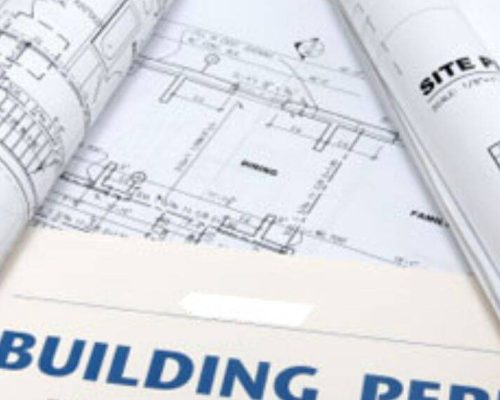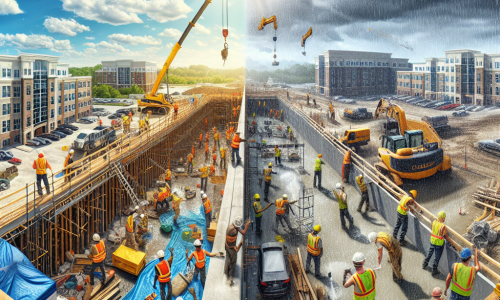Sustainable Building Materials: The Future of Construction in Delaware
Delaware, known for its rich history and beautiful landscapes, is also making a name for itself in the construction industry. With a growing focus on sustainability and environmental consciousness, the state has seen a rise in the use of innovative construction materials. These materials not only reduce the environmental impact of construction but also offer numerous benefits such as durability, energy efficiency, and cost-effectiveness.
One of the most popular sustainable building materials in Delaware is recycled steel. This material is made from scrap metal and has a significantly lower carbon footprint compared to traditional steel. It is also highly durable and can withstand extreme weather conditions, making it an ideal choice for construction in Delaware’s coastal areas. Recycled steel is also lightweight, which reduces the need for heavy machinery during construction, resulting in lower energy consumption and costs.
Another material gaining popularity in Delaware is bamboo. This fast-growing plant is a renewable resource and has a higher strength-to-weight ratio than steel. It is also highly versatile and can be used for various purposes in construction, such as flooring, walls, and even as a replacement for traditional lumber. Bamboo is also known for its natural resistance to pests and mold, making it a low-maintenance and long-lasting option for sustainable construction.
In addition to recycled steel and bamboo, Delaware is also seeing an increase in the use of recycled plastic in construction. This material is made from post-consumer plastic waste and can be used for a variety of purposes, including insulation, roofing, and even structural components. Recycled plastic not only reduces the amount of plastic waste in landfills but also has excellent insulation properties, which can help reduce energy consumption and costs for heating and cooling buildings.
Another sustainable material making its mark in Delaware is rammed earth. This ancient building technique involves compacting layers of earth into a formwork to create walls. Rammed earth is not only environmentally friendly, as it uses locally sourced materials, but it also has excellent thermal mass properties, making it energy-efficient. It is also highly durable and has a unique aesthetic appeal, making it a popular choice for both residential and commercial construction in Delaware.
Delaware is also embracing the use of green roofs, also known as living roofs. These roofs are covered with vegetation, providing numerous benefits such as improved air quality, reduced energy consumption, and stormwater management. Green roofs also help regulate the temperature inside buildings, reducing the need for heating and cooling, and can extend the lifespan of the roof by protecting it from UV rays and extreme weather conditions.
In addition to these innovative materials, Delaware is also incorporating sustainable building practices such as passive solar design and the use of energy-efficient windows and insulation. Passive solar design utilizes the natural elements of the sun, wind, and vegetation to regulate the temperature inside buildings, reducing the need for artificial heating and cooling. Energy-efficient windows and insulation also help reduce energy consumption and costs by keeping buildings well-insulated.
The use of these sustainable building materials and practices not only benefits the environment but also offers economic advantages. By reducing energy consumption and costs, these materials can help save money in the long run. They also contribute to the overall health and well-being of the community by creating healthier and more sustainable living and working spaces.
In conclusion, Delaware is at the forefront of sustainable construction, with a growing demand for innovative materials and practices. From recycled steel and bamboo to green roofs and passive solar design, these materials and techniques are paving the way for a more environmentally conscious and economically viable future in construction. As the state continues to prioritize sustainability, we can expect to see even more innovative materials and practices being used in construction projects across Delaware.
Revolutionizing Construction: Exploring the Use of 3D Printing in Delaware

The construction industry has seen significant advancements in recent years, with new technologies and materials constantly emerging. One such innovation that has gained popularity in Delaware is 3D printing. This revolutionary technology has the potential to transform the way buildings are constructed, making the process faster, more efficient, and cost-effective.
3D printing, also known as additive manufacturing, involves creating three-dimensional objects by layering materials on top of each other based on a digital design. While this technology has been used in various industries, including healthcare and aerospace, its application in construction is relatively new. However, it has already shown promising results, and many construction companies in Delaware are incorporating 3D printing into their projects.
One of the main advantages of 3D printing in construction is its ability to create complex and intricate designs that would be difficult to achieve with traditional construction methods. This is especially beneficial for architects and designers who can now bring their creative visions to life without being limited by the constraints of traditional building techniques. Additionally, 3D printing allows for a high level of customization, making it ideal for projects that require unique and personalized designs.
Another significant advantage of 3D printing in construction is its speed. Traditional construction methods can be time-consuming, with various stages of the process requiring different materials and specialized labor. With 3D printing, the entire construction process can be completed in a fraction of the time. This is because the technology allows for the creation of entire building components in one go, eliminating the need for multiple stages and reducing the overall construction time.
Moreover, 3D printing in construction is also more cost-effective. The technology uses less material compared to traditional construction methods, reducing waste and saving on material costs. Additionally, the speed of 3D printing means that projects can be completed in a shorter time, resulting in lower labor costs. This makes it an attractive option for construction companies looking to increase efficiency and reduce costs.
One of the most significant applications of 3D printing in construction is the creation of affordable housing. Delaware, like many other states, is facing a shortage of affordable housing, and 3D printing has the potential to address this issue. By using 3D printing technology, affordable housing units can be constructed quickly and at a lower cost, making them more accessible to those in need. This has the potential to revolutionize the affordable housing sector in Delaware and provide much-needed relief to the housing crisis.
In addition to its practical applications, 3D printing in construction also has environmental benefits. The technology uses less material, which means less waste is produced. This is especially important in a time where sustainability and reducing carbon footprint are crucial considerations in the construction industry. Furthermore, 3D printing allows for the use of recycled materials, making it a more environmentally friendly option compared to traditional construction methods.
While 3D printing in construction has many advantages, it is not without its challenges. One of the main challenges is the lack of skilled labor trained in 3D printing technology. As this is a relatively new technology, there is a shortage of professionals with the necessary expertise to operate and maintain 3D printers. However, with the increasing popularity of 3D printing in construction, it is expected that more training and education programs will be developed to address this issue.
In conclusion, 3D printing is revolutionizing the construction industry in Delaware. Its ability to create complex designs, reduce construction time and costs, and provide sustainable solutions make it an attractive option for construction companies. As the technology continues to evolve and become more accessible, we can expect to see more innovative and exciting projects using 3D printing in the future.
The Rise of Prefabricated Construction in Delaware: Benefits and Challenges
Delaware, known for its rich history and charming small towns, is also making a name for itself in the construction industry. With a growing population and a demand for more efficient and sustainable buildings, the state has seen a rise in the use of innovative construction materials, particularly in the form of prefabricated construction.
Prefabricated construction, also known as modular construction, involves the manufacturing of building components off-site and then assembling them on-site. This method has gained popularity in Delaware due to its numerous benefits, including cost-effectiveness, speed, and sustainability.
One of the main advantages of prefabricated construction is its cost-effectiveness. By manufacturing building components in a controlled factory setting, companies are able to reduce material waste and labor costs. This translates to lower construction costs for clients, making it an attractive option for both residential and commercial projects.
In addition to cost savings, prefabricated construction also offers a faster construction timeline. Since the building components are manufactured off-site, the on-site construction process is significantly reduced. This means that projects can be completed in a shorter amount of time, allowing for quicker occupancy and return on investment for developers.
Moreover, prefabricated construction is also more sustainable compared to traditional construction methods. The controlled factory setting allows for better quality control and the use of sustainable materials. Additionally, the reduced construction time means less disruption to the surrounding environment and a smaller carbon footprint.
One of the most popular innovative construction materials used in prefabricated construction in Delaware is cross-laminated timber (CLT). CLT is a type of engineered wood that is made by stacking layers of wood panels in alternating directions and then gluing them together. This creates a strong and durable material that can be used for walls, floors, and roofs.
CLT has gained popularity in Delaware due to its sustainability and versatility. It is a renewable resource and has a lower carbon footprint compared to traditional building materials such as concrete and steel. Additionally, CLT can be prefabricated off-site and easily assembled on-site, making it a perfect fit for the prefabricated construction method.
Another popular material used in prefabricated construction in Delaware is insulated concrete forms (ICFs). ICFs are hollow foam blocks that are stacked together to create the walls of a building. These blocks are then filled with concrete, creating a strong and energy-efficient structure.
ICFs have gained popularity in Delaware due to their energy efficiency and durability. The foam blocks provide excellent insulation, reducing energy consumption and costs for heating and cooling. Additionally, the concrete filling makes the building more resistant to natural disasters such as hurricanes and earthquakes.
While the benefits of prefabricated construction are clear, there are also some challenges that come with this method. One of the main challenges is the limited design options. Since the building components are manufactured off-site, there is less flexibility in design compared to traditional construction methods. However, with advancements in technology, this limitation is slowly being overcome, and more design options are becoming available.
Another challenge is the transportation of the prefabricated components to the construction site. This requires careful planning and coordination to ensure that the components arrive on time and in good condition. However, with proper logistics and coordination, this challenge can be overcome.
In conclusion, the rise of prefabricated construction in Delaware has brought numerous benefits to the construction industry. From cost savings to sustainability, this method has proven to be a viable option for both residential and commercial projects. With the use of innovative materials such as CLT and ICFs, prefabricated construction is paving the way for a more efficient and sustainable future in Delaware.










